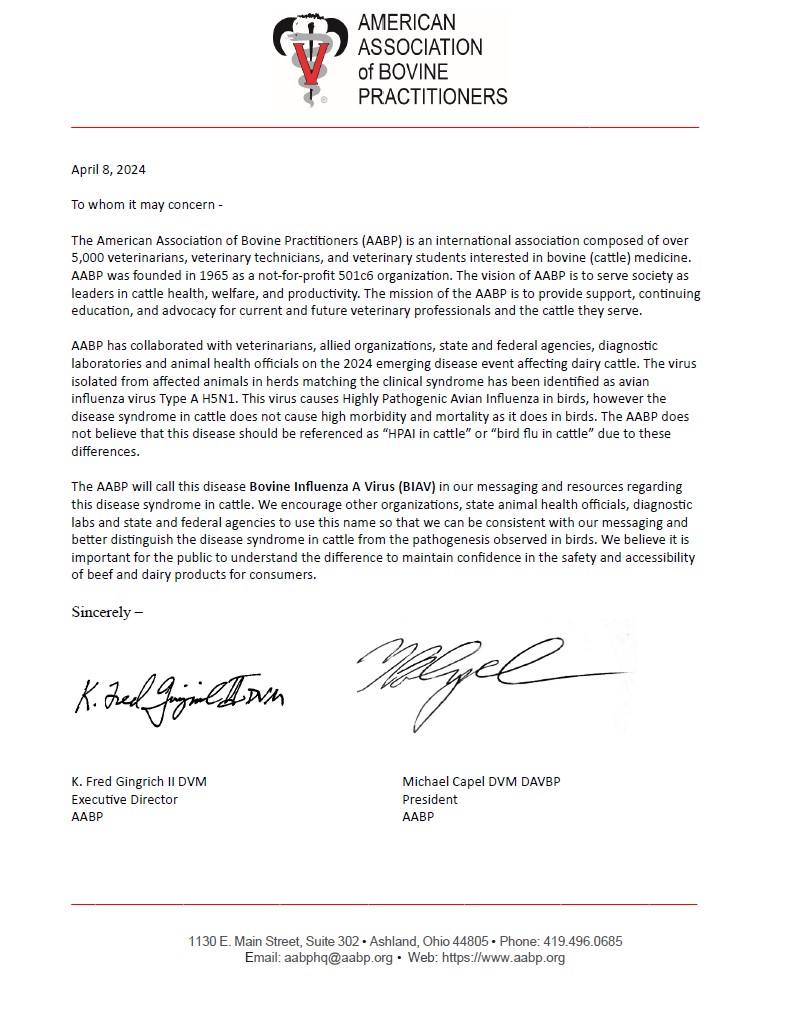AABP Decides to Reference Cattle Disease as Bovine Influenza A Virus (BIAV)

On Sunday evening, the American Association of Bovine Practitioners (AABP), released a letter to its media partners to update them on how the organization will reference the emerging cattle disease, currently confirmed in dairy herds in six states, moving forward.
"Because this infection in cattle is not the same as highly pathogenic avian influenza (HPAI), after thoughtful consideration and discussion with many experts, the AABP will now refer to this as Bovine Influenza A Virus (BIAV), which more accurately depicts it," wrote Geni Wren, director of marketing and communications for the organization, in an email accompanying the letter.
The letter was developed and signed by AABP executive director, Fred Gingrich, DVM, and president Michael Capel, DVM.
Gingrich and Capel are asking other organizations, state animal health officials, diagnostic labs, and state and federal agencies to use Bovine Influenza A Virus (BIAV) "so we can be consistent with our messaging and better distinguish the disease syndrome in cattle from the pathogenesis in birds. We believe it is important for the public to understand the difference to maintain confidence in the safety and accessibility of beef and dairy products for consumers," they wrote.
The letter is available in its entirety for review here:








